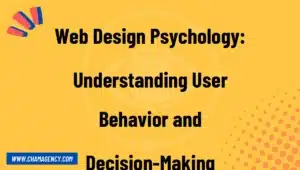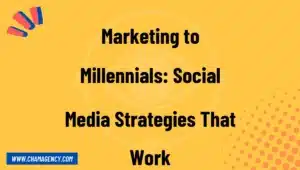Having a website for your business is not enough in the digital age. It is essential to create a website design that is conversion-oriented to turn website visitors into customers. In this article, we will discuss the basics of website design for conversion and highlight three essential elements that are necessary to create a website that converts visitors into customers.
Understanding the Basics of Website Design for Conversion
In today’s digital age, having a website for your business is essential, but just having a website is not enough. It is important to create a website design that is conversion-oriented, meaning it is designed to turn website visitors into customers. In this article, we will explore the basics of website design for conversion and provide insight into three key elements that are essential to creating a website that converts visitors into customers.
Defining Conversion-Oriented Website Design
Conversion-oriented website design is all about creating a website that is strategically designed to convert visitors into customers. It involves using specific design elements and techniques that guide users towards taking a desired action on your website, such as making a purchase, filling out a form, or subscribing to your newsletter. The ultimate goal is to create a website that not only looks great but also performs well and achieves your business objectives.
The Importance of User Experience (UX) in Website Design
One of the most critical components of conversion-oriented website design is user experience (UX). UX refers to the overall experience that users have when they interact with your website. This includes how easy it is to navigate your website, how quickly it loads, and how engaging and helpful your content is. Creating a positive user experience is essential for building trust with your visitors and encouraging them to take action on your website.
Key Design Elements that Affect Conversion
There are several design elements that can significantly impact your website’s conversion rate. These include the use of clear and compelling headlines, high-quality images and videos, easy-to-use navigation, and the strategic placement of calls-to-action (CTAs). It is essential to keep in mind that every element of your website should be designed with the user in mind, and the ultimate goal should be to make it as easy as possible for visitors to take action.
Conducting Research to Optimize Website Design for Conversion
The success of a website design hinges on its ability to convert visitors into customers. While there are many design elements that contribute to this conversion process, conducting thorough research is a critical first step in optimizing a website’s design for conversion. In this section, we will explore three key components of this research phase: analyzing user behavior, identifying and addressing pain points in the user journey, and conducting A/B testing.
Analyzing User Behavior to Inform Design Decisions
Understanding user behavior is essential to optimizing a website’s design for conversion. By analyzing how users interact with a site, designers can identify areas where improvements can be made to increase the likelihood of conversion. This analysis can take many forms, such as tracking how users navigate a site, what pages they visit, and how long they spend on each page.
Tools such as heat maps, click tracking, and user recordings can provide valuable insight into user behavior. Heat maps can show where users are clicking on a page, while click tracking can reveal the order in which users are clicking on different elements. User recordings, meanwhile, provide a visual representation of how users are interacting with a site, including where they are scrolling and what they are clicking on.
By analyzing this data, designers can identify areas where users are experiencing friction or confusion and adjust the design accordingly. For example, if users are spending a lot of time on a particular page but not taking the desired action, such as making a purchase, the designer may need to simplify the page layout, adjust the placement of calls-to-action, or provide clearer instructions.
Identifying and Addressing Pain Points in the User Journey
In addition to analyzing user behavior, it’s important to identify pain points in the user journey that may be preventing conversion. A pain point is any aspect of the user experience that causes frustration or confusion for the user, such as a complex checkout process or unclear navigation.
To identify pain points, designers can use a combination of user feedback and analytics data. User surveys or feedback forms can provide valuable insight into what users are struggling with on a site, while analytics data can reveal where users are dropping off in the conversion process.
Once pain points have been identified, designers can take steps to address them. This may involve simplifying the user journey, providing more information or guidance, or adjusting the design of specific elements on the site.
Conducting A/B Testing to Determine Optimal Design
A/B testing is a powerful tool for optimizing website design for conversion. In an A/B test, two versions of a page are shown to users, with one element of the design changed between the two versions. This might involve testing different calls-to-action, headlines, or page layouts.
By comparing the conversion rates of the two versions, designers can determine which design element is most effective at driving conversions. This information can then be used to optimize the design of the site as a whole.
Implementing Design Strategies for Conversion Optimization
Once you’ve conducted thorough research to understand user behavior and pain points, it’s time to implement design strategies that will optimize your website for conversion. By implementing these strategies, you can effectively guide visitors through the user journey and encourage them to take action.
Using Calls-to-Action (CTAs) Effectively
Calls-to-action are one of the most critical design elements for conversion optimization. They guide visitors towards the next step in the user journey and encourage them to take action. It’s essential to use clear, compelling CTAs that clearly communicate what the user can expect when they click. Some best practices include using action-oriented language, contrasting colors, and placing the CTA in a prominent location on the page. By experimenting with different CTAs, you can determine what resonates most with your audience and optimize your website accordingly.
Simplifying Navigation and Reducing Friction
Website navigation should be intuitive and easy to use. Visitors should be able to find what they’re looking for quickly and easily. If your website navigation is cluttered or confusing, visitors are likely to become frustrated and leave without converting. To optimize navigation, consider organizing your content into logical categories and using clear labeling. Additionally, reducing friction throughout the user journey can also increase conversion rates. This means removing any unnecessary steps or forms that could discourage visitors from completing a desired action.
Optimizing Page Load Speeds for Improved Conversion
Page load speed is a crucial factor in website design for conversion optimization. A slow-loading website can lead to a high bounce rate, as visitors become impatient and navigate away from the site. To optimize page load speeds, consider compressing images, minifying code, and utilizing browser caching. Additionally, ensure that your website hosting service is reliable and able to handle high levels of traffic. By optimizing page load speeds, you can create a seamless user experience that encourages visitors to convert.
Measuring and Analyzing Website Conversion Rates
Measuring and analyzing website conversion rates is a crucial aspect of creating a website design that converts visitors into customers. It allows you to understand how effective your website design is at achieving your conversion goals and helps you identify areas for improvement. In this section, we will explore the key metrics for measuring conversion, how to analyze conversion data, and how to continuously iterate and improve website design for conversion optimization.
Understanding Key Metrics for Measuring Conversion
To effectively measure website conversion rates, you need to understand the key metrics that are used. These include conversion rate, bounce rate, average session duration, and exit rate. Conversion rate is the percentage of visitors who take a specific action on your website, such as making a purchase or filling out a contact form. Bounce rate is the percentage of visitors who leave your website after viewing only one page. Average session duration is the amount of time visitors spend on your website, while exit rate is the percentage of visitors who leave your website after viewing multiple pages.
Analyzing Conversion Data to Identify Areas for Improvement
Once you have a good understanding of these key metrics, you can analyze your conversion data to identify areas for improvement. For example, if you have a high bounce rate, it may indicate that your website design is not engaging visitors effectively, and you may need to make changes to improve user experience. Similarly, if your conversion rate is low, you may need to optimize your calls-to-action or simplify your website navigation to make it easier for visitors to find what they are looking for.
Continuously Iterating and Improving Website Design for Conversion Optimization
Finally, it’s essential to continuously iterate and improve your website design for conversion optimization. This means testing different design elements, analyzing the results, and making changes accordingly. A/B testing is a powerful tool for this, allowing you to compare two different versions of your website design to see which one performs better. By continuously iterating and improving your website design, you can achieve higher conversion rates and ultimately drive more revenue for your business.
Conclusion
Creating a website that converts visitors into customers is essential in today’s digital age. To achieve this, it is crucial to focus on conversion-oriented website design that incorporates user experience, key design elements, and research. By analyzing user behavior, identifying pain points, and conducting A/B testing, businesses can optimize their website’s design for conversion. Implementing effective calls-to-action, simplifying navigation, and creating engaging content are crucial design strategies to guide visitors through the user journey and encourage them to take action. With these design strategies in mind, businesses can create a website that not only looks great but also performs well and achieves their business objectives.
If you want to know more about Cham website design you can visit Website design page, or you can get a free consultant on contact page.









